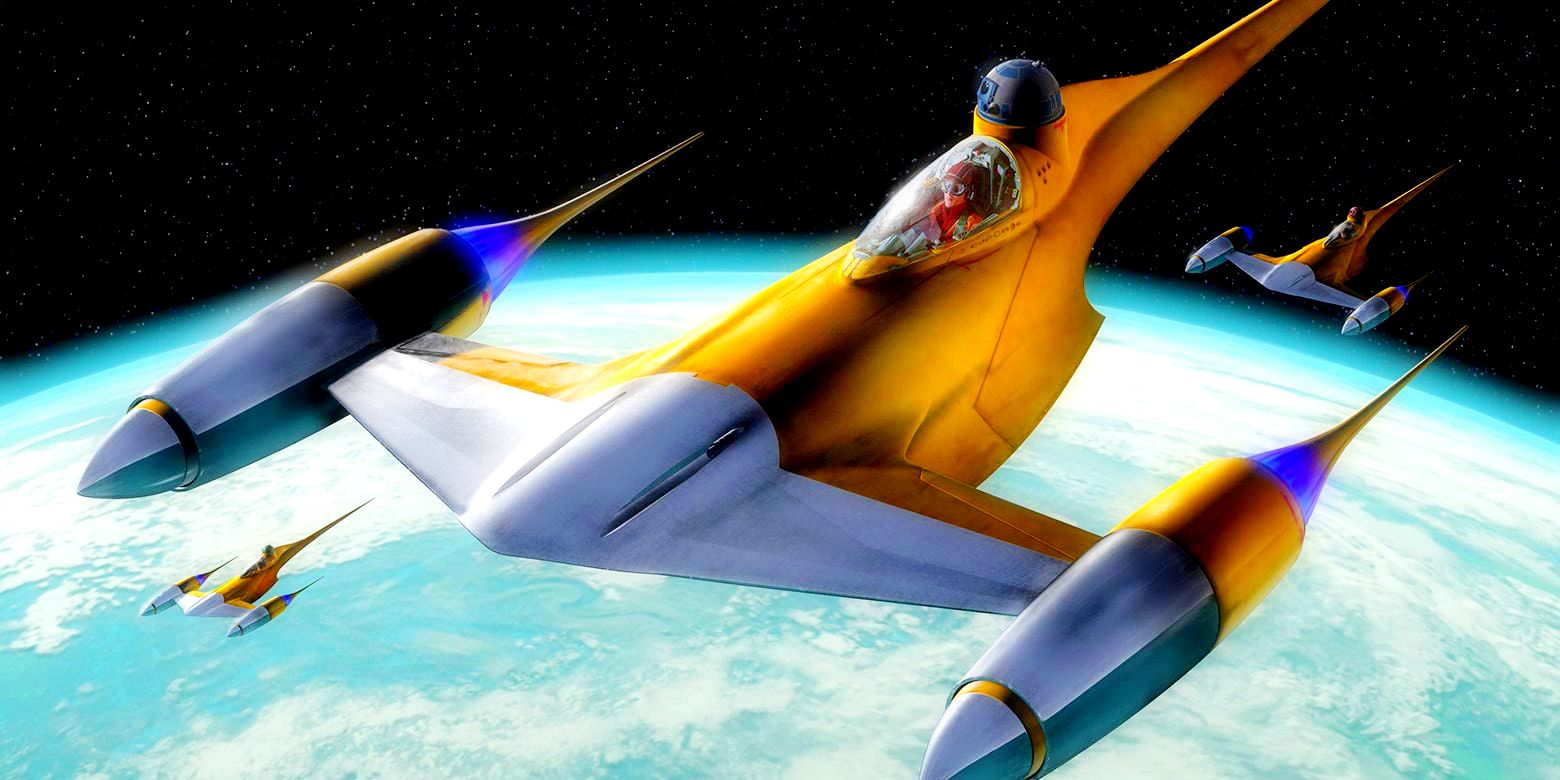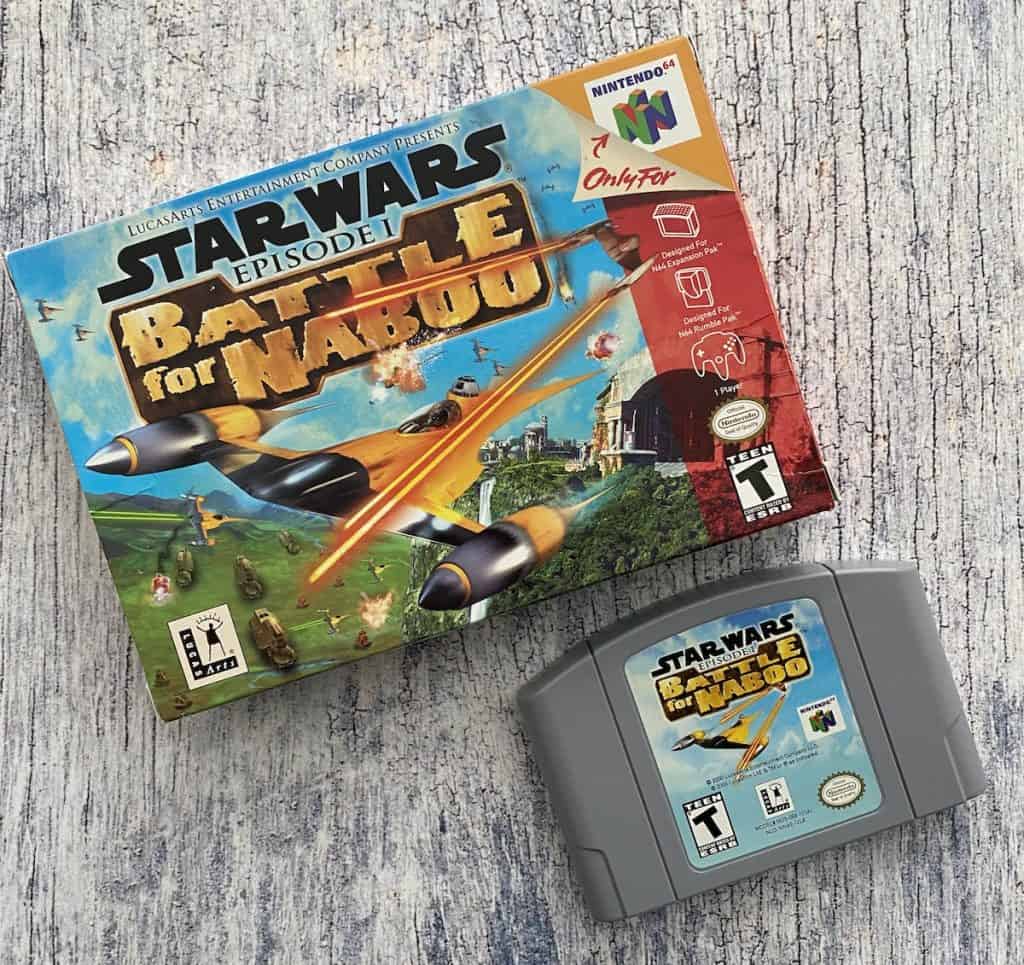

The RSP controls a DMA channel to help move data needed for by the RDP, like textures, and to fetch samples to process into the audio output. The RSP is an R4000 MIPs processor with the multiply, divide, and branch likely opcodes removed, and a simple SIMD unit added to help process audio, geometry, and lighting. About the only differences between the RDP and other GPUs of the time: it used a funny edge-walking algorithm for rasterizing polys, and it had a pretty tiny texture cache (holds one 32×32 32-bit texture). The N64 chipset consists of three main parts: the main cpu, a second cpu to handle sounds and video control (the RSP), and a fairly standard GPU (the RDP). You can use it during any of the game’s missions, which is just as well given how difficult some of them are.The thing to understand about the N64 is that it isn’t magic, that’s just a lot of hype by SGI.

In terms of durability, the Naboo starfighter is similar to the X-wing. It also has an R2 unit, giving it rechargeable shields. The Rogue Squadron Naboo starfighter has dual blaster cannons (which can be linked to fire simultaneously), as well as seeker torpedoes. What abilities does the Naboo starfighter have?
#Star wars battle for naboo n64 codes code#
To disable this cheat, type in HALIFAX? on the Passcodes screen and select Enter Code, followed by a second password that be can be whatever you like (remember to also select Enter Code again). You’ll hear the same rejection sound, but if you go to the vehicle select screen in one of your save files, you’ll now see the Naboo starfighter to the left of the X-wing. When you do this, you will hear R2-D2 make a sound that suggests the code hasn’t worked – ignore this, it’s a trap! Now enter !YNGWIE! and select Enter Code again. Then enter HALIFAX? using the character select wheel and select Enter Code. More than six months after the game’s release, LucasArts revealed the code needed to unlock the Rogue Squadron Naboo starfighter to the games press on 16 July 1999, which was actually a month after The Phantom Menace released in cinemas.įrom Rogue Squadron’s title screen, go to the Options menu and select Passcodes. To combat this, a scrambling system was inserted into the game’s code to obscure the ship’s inclusion. This drastically reduced the chances of a potential premature leak.īut there was still the issue of cheat cartridges possibly unveiling it. Those who did know about it, didn’t know the code to unlock it. The Naboo starfighter later made another N64 appearance in Star Wars: Episode 1 – Battle for Naboo, which released in 2000/01.įirst of all, it’s worth noting that the majority of people in Rogue Squadron’s development team were, in fact, not made aware of the plan to include the Naboo starfighter. This is because Rogue Squadron, which was released in late 1998, came out six months before The Phantom Menace. LucasFilm provided design art for the Naboo starfighter for the creation of an in-game model on the condition that it be kept secret until after the game’s release. Rogue Squadron’s development team saw this as a great opportunity to link the two projects together, in the hope that the hype for The Phantom Menace (which was huge at the time) could benefit the game’s sales. It was the first Star Wars film since Star Wars: Return of the Jedi, which had released 16 years prior to The Phantom Menace’s release. The origins of the Star Wars: Rogue Squadron Naboo starfighterįactor 5 and LucasArts were developing Rogue Squadron at the same time that the film Star Wars Episode I: The Phantom Menace was in production. At the time, the Rogue Squadron Naboo starfighter was widely considered to be the best hidden secret in an N64 game, and was only made known when LucasArts chose to announce it. To be clear, it’s not the vehicle itself that’s remarkable, but rather how both Factor 5 and LucasArts kept it a secret until six months after Rogue Squadron was released in 1998.

But arguably the most outstanding achievement was the inclusion of the extremely well-hidden, Rogue Squadron Naboo starfighter. Star Wars: Rogue Squadron was an impressive game for its time, sporting high-resolution graphics and immersive audio thanks to Factor 5’s MOsys FX tool. Star Wars: Rogue Squadron’s Naboo starfighter


 0 kommentar(er)
0 kommentar(er)
